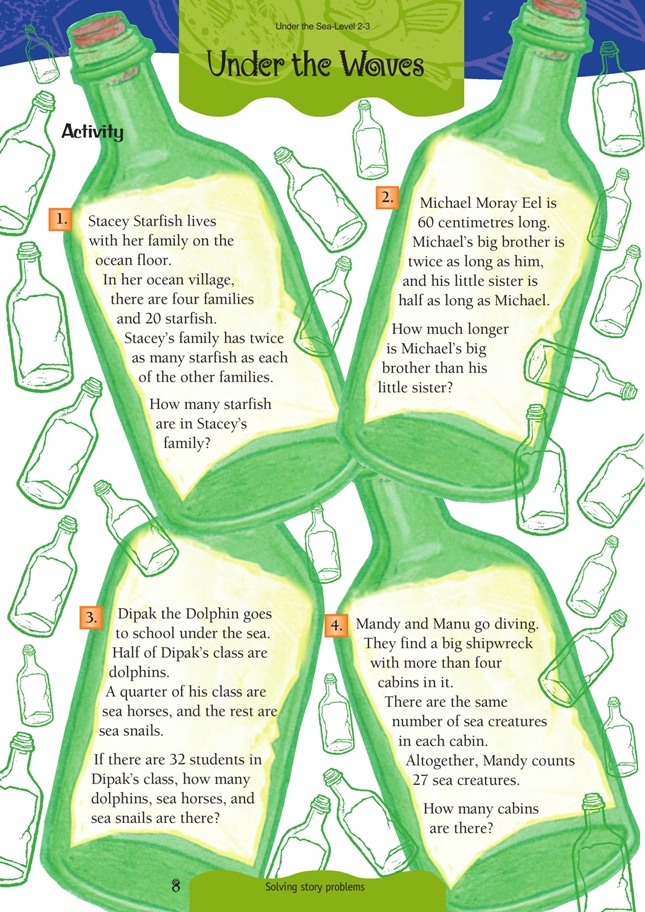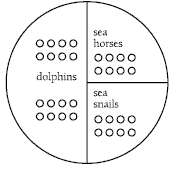This is a level 3 number activity from the Figure It Out theme series.
A PDF of the student activity is included.
Click on the image to enlarge it. Click again to close. Download PDF (281 KB)
solve word problems using multiplication
solve word problems involving finding fractions
Each of the problems given on this page provides excellent opportunities for students to apply problem-solving strategies (see Mathematics in the New Zealand Curriculum, pages 24 and 25).
Particular emphasis should be on the strategies of drawing diagrams and acting out. For example, a diagram of question 2 might look like:
.gif)
Similarly, a pictorial diagram of question 3 might be:
Students might use 32 counters to represent the class members and share them out evenly among the quarters. It is important that students realise that one-half is two-quarters.
So eight of the class are sea horses, eight are sea snails, and 16 are dolphins.
Question 4 is a “bits missing” problem. Students will need to work out how many cabins are possible given that the number of sea creatures in each cabin must be the same. Students can use a variety of strategies to find a solution:
• Trial and improvement (sharing 27 counters between a number of piles)
• Elimination (trying different numbers of cabins but eliminating numbers such as six, eight, and 10, which are not possible because 27 is an odd number)
• Using multiplication facts that have an answer of 27 (1 x 27, 3 x 9, 9 x 3, 27 x 1). As there are more than four cabins, this leaves two possibilities (27 cabins with one sea creature in each or nine cabins with three sea creatures in each).
Answers to Activity
1. 8
2. 90 cm
3. 16 dolphins
8 sea horses
8 sea snails
4. Two possible answers: 9 cabins (3 in each) or 27 cabins (1 in each)


